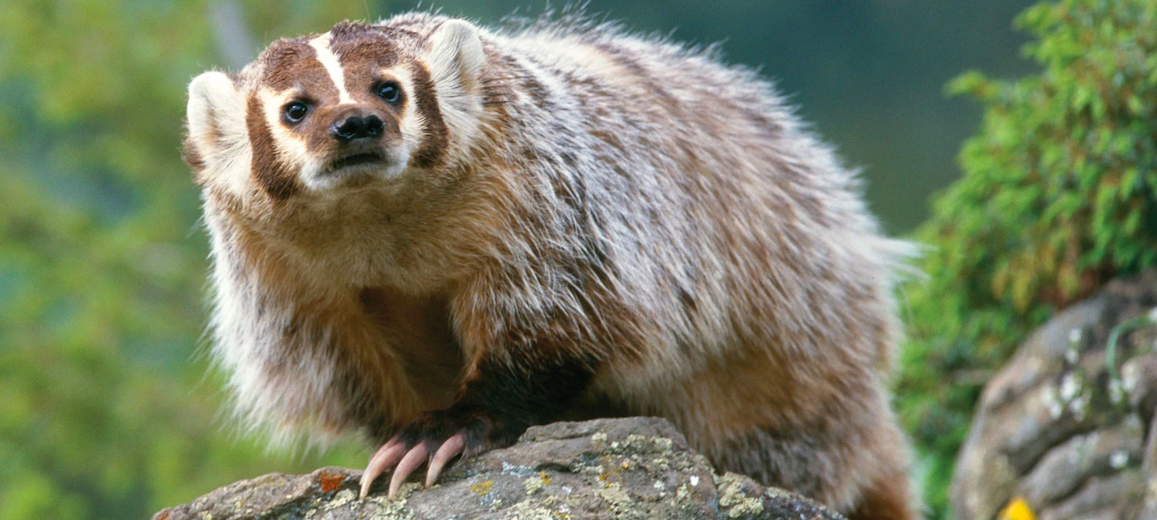
The American badger is native to North American grasslands which spread from Southern Canada all the way down to Mexico. They have one of the largest ranges of the world’s badger species. These creatures prefer a drier climate and they like to live in grassy fields and on prairies. American Badgers are found in cold deserts and a great deal of park lands. They are listed as Least Concern by the IUCN. While not as famous as the honey badger, these critters are not to be taken for granted.
First the Stats…
Scientific name: Taxidea taxus
Weight: Up to 26 lbs.
Length: Up to 35 inches
Lifespan: Up to 20 years
Now on to the Facts!
1.) These critters are carnivores (eat meat) and they have a ravenous appetite.
2.) They eat a wide variety of other animals, including: ground squirrels, pocket gophers, prairie dogs, moles, marmots, deer mice, packrats, kangaroo rats, voles, insects, spiders, scorpions, snakes, and even birds.
3.) Badgers use their sharp claws and powerful forelimbs to dig out prey from their burrows; sometimes even completely destroying their prey’s burrows to get at a meal.
4.) The American badger is nocturnal (active at night) and solitary.
5.) Impressive burrows are made that can be as far as 9 feet below the surface and have up to 30 feet of tunnels, with an enlarged sleeping chamber.
But wait, there’s more on the American badger!
6.) They are not the sweetest animal to encounter. Badgers are typically very defensive and, if approached and they feel threatened, will defend themselves ferociously by growling, hissing, clawing, biting, and releasing a very unpleasant odor (kind of like a liquid fart)! They are not ones for backing down from a fight either. “Come at me, bro!”
7.) A badger spends most of the winter in cycles of torpor (a state of physical or mental inactivity) that last around 29 hours at a time.
Did you know…?
Badgers help control rodent populations, they kill venomous snakes, and they eat insects and carrion (dead animals).
8.) Their primary predators are cougars, wolves, coyotes, bobcats, bears, great horned owls, and golden eagles.
9.) Mating typically happens in late summer to early fall.
10.) Females give birth to 1 – 5 young, called pups.
Now a Short American Badger Video!
Also, check out the Critter Science YouTube channel. Videos added frequently!
Want to suggest a critter for me to write about? Let me know here.




Leave a Reply